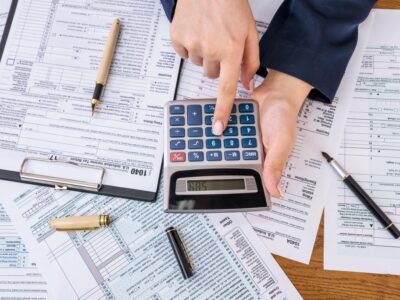How to Calculate CapEx Formula

Nowadays, it has become impossible for many businesses to function without certain software. Whether it is management software or a cyber security infrastructure, digital solutions form the backbone of many administrative processes, especially capex examples for large businesses. The cost of purchase, installation, maintenance, and upgradation of this software is a capital expenditure. The machinery and equipment used to develop products are unavoidable expenses for businesses.
- A building or property upgrade would be seen as a capital acquisition since the asset will be used for many years.
- We’ll now move on to a modeling exercise, which you can access by filling out the form below.
- Digital Banking
The process of businesses making strategic investments is known as capital expenditure, or CapEx. Capital expenditure is an incredibly common method used by larger businesses to take their commerce to the next level, and in many cases further elevate their market share. Investing in improving fixed assets such as machinery or an office building can go a long way in giving a business a competitive edge. The capital expenditure budget is the money allocated for the upgrade, purchase, or maintenance of fixed assets (capital assets). CapEx is reflected on the balance sheet as an increase in the property, plant, and equipment (PP&E) account. PP&E is a long-term asset that represents the company’s investment in its physical assets, such as buildings, equipment, and land.
Types of Capital Expenditures
Marketing | Are you spending too much time and money trying to attract new customers? Don’t forget the importance of customer retention — learn how to maximize its benefits for your business. Before moving forward with executing capital expenditures, be sure to consult with your CPA to determine if the tax implications are feasible.
- However, because depreciation is a non-cash expense, it does not involve an actual cash outflow.
- It involves investing in long-term assets that are expected to generate income for the company over a period of time, typically over the period of a few years.
- A proper budget will ensure you have the necessary funds to move forward with capex projects while keeping enough cash to support operations.
- Major purchases that will be used for a longer length of time than the present accounting period are referred to as capital expenditures.
- Unlike operating expenses, which recur consistently from year to year, capital expenditures are less predictable.
- For the vast majority of companies, Capex is one of the most significant outflows of cash that can have a major impact on free cash flow (FCF).
Many companies usually try to maintain the levels of their historical capital expenditures to show investors that they are continuing to invest in the growth of the business. If, however, the expense maintains the asset at its current condition, such as a repair, the cost is typically deducted fully in the year the expense is incurred. Operating expenses are shorter-term expenses required to meet the ongoing operational costs of running a business. Unlike capital expenditures, operating expenses can be fully deducted from the company’s taxes in the same year in which the expenses occur. Capex (capital expenditure) is not typically tax-deductible in the year it is incurred, as it is considered an investment in the company’s long-term assets. However, the cost of the asset can be depreciated over time, which can result in tax deductions in future years.
Compound Interest: A Guide to Long-Term Financial Growth
A manufacturing company wants to increase cement production capacity to meet the demands of a growing industry. The company will buy new machinery to increase cement production within the next year to accommodate that goal. Organizations can set up an automation workflow to approve equipment purchases similar to that designed for purchasing new laptops for the finance department. For this reason, a demo account with us is a great tool for stock investors who are looking to make a transition to leveraged trading.
- By investing in fixed assets, companies can improve their operations, become more efficient, and position themselves for long-term profitability.
- They are recognized as CapEx when acquired so that the benefits of each can be spread across several reporting periods.
- The long-term strategic goals, as well as the budgeting process of a company, need to be in place before authorization of capital expenditures.
- The capital expenditure calculation reveals that the organization invested $200,000 in creating or maintaining fixed assets that year, which must be recorded on their balance sheet.
- Capital Expenditures (CapEx) is the cash a company pays for capital assets that will deliver long-term value to the business.
- CapEx (short for capital expenditures) is the money invested by a company in acquiring, maintaining, or improving fixed assets such as property, buildings, factories, equipment, and technology.
A new vehicle purchased by a firm for its fleet is seen as a capital investment. If you have access to a company’s cash flow statement, you can just look at the capital expenditures that were made in the investing cash flow section without performing any calculations. Capital expenditures https://www.bookstime.com/ can take many forms, such as purchasing new equipment, investing in infrastructure, or building new facilities. These expenditures are generally considered to be investments in the company’s future growth and are therefore treated differently than other types of expenses.
Decide how you will buy the asset
If the benefit is greater than 1 year, it must be capitalized as an asset on the balance sheet. Capital expenditures are purchases made by a company and capitalized on a balance sheet rather than being fully expensed at the time of purchase. Assets that are capitalized can be accounted for over their useful lifetime and depreciated. Capital expenditure (CapEx) is money that is spent to acquire, repair, update, or improve a fixed company asset, such as a building, business, or equipment. A CapEx is different from an everyday business, which falls under the operating expense category. In terms of building a complete 3-statement financial model, taking the time to assess historical capital expenditure levels properly and projecting future capex accordingly is a critical step.
